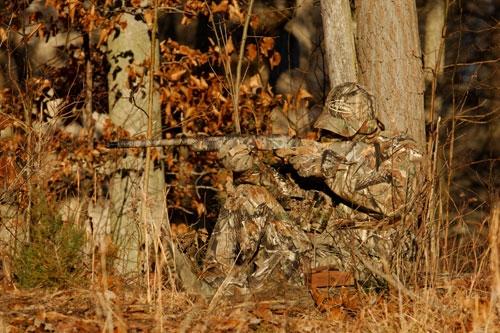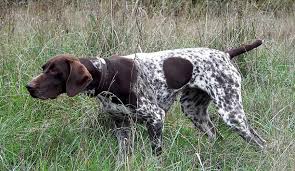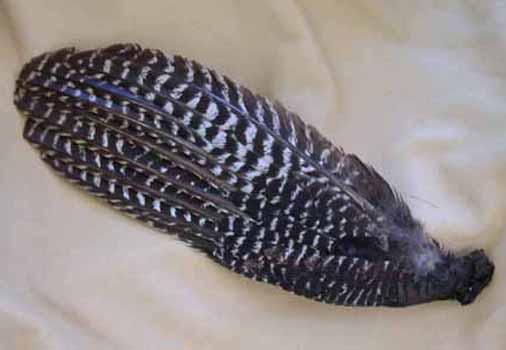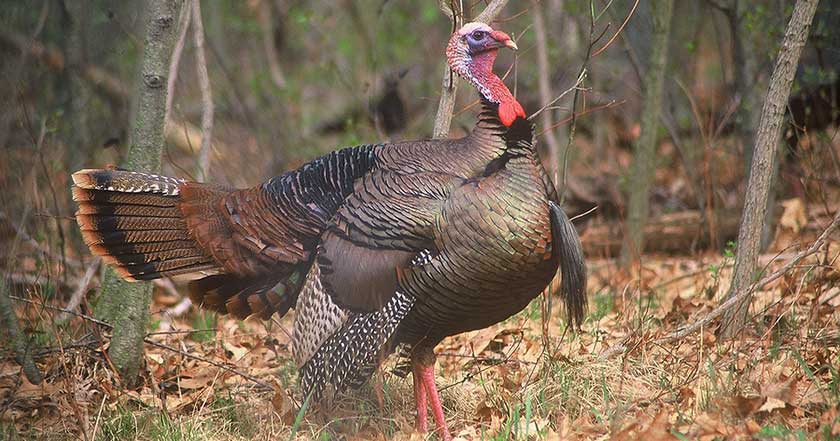The morning is cool. The woods are quiet and dark as you slip your way into your blind. You’ve been careful to not be seen, dressed head to toe in camo and armed with your trusty turkey-dominating 12 gauge. Nothing… but nothing could make this morning more perfect.
The sky begins to lighten and silhouettes of limbs and trees begin to emerge. Mist rises from the forest floor and the gray gives over to oranges and reds bouncing off the clouds, reflecting back the warmth of a rising sun. It’s time. You give a soft cluck and purr and drone in a gentle yelp on the slate call. BAM! You’re met with a thunderous gobble that you could swear came from under your seat! Every hair on your neck and arms stands on end in response to the enormous dose of adrenaline suddenly released into your blood stream and your heart beats like it’s trying to claw its way out of your chest. You almost can’t breathe and if you let yourself even just a little you’ll begin to shake uncontrollably. Your eyes scan the horizon and you ready yourself.

A few more yelps and purrs are met with an even closer gobble. You hear wings drumming the ground and from the corner of your eye spot the fan in full plume. A dance of male pride and significance, dominance, and grandeur ensue as the mature tom struts everything he’s got for the yet-to-be-seen hen that has undoubtedly called for his personal attention. He breaches the 30-yard mark as he crosses into your site down the barrel. You ease to the trigger and… WAIT! This isn’t springtime?! Get your head in the game.
Spring has sprung, summer has flung, and the leaves are turning color friend. It’s fall and all your buddies are sharpening their broad heads and making their last-minute deer hunt strategies. What are you thinking? You’re thinking turkey. And who can blame you? Spring was a grand ole time chasing those big boys. Well, there’s good news. It doesn’t have to wait for next spring.
Every deer hunter loves the rut. But how often do deer hunters confine themselves to only the rut? Well, even though the toms aren’t out there pining for the ladies, it doesn’t mean you can only hunt them when they are. And don’t forget, turkey hunting got its start in the fall. There were no freezers for those early Thanksgiving birds. Though spring turkey hunting took center stage in recent decades, with the growing and recovering populations of wild turkeys across the country, 44 states now offer a fall season. It can be a great time to be out there after them. Each state offering a fall season has bag limits on both toms and hens as well, which is an advantage to those of us whose spring season is limited to toms only.
Fall hunting can be similar to spring hunting in the base aspects. Just like springtime, you need to do some serious scouting to hone in on a good hunting spot. All the physical signs are the same. You’ll find scratching and dust bowls in populated turkey areas. As well as feathers fallen from turkeys lighting to and from the roost. Tracks are always a dead giveaway. Look for those dirt patches on trails and soft mud around water edges. You’ll find that unmistakable 3 toe if there’s been a turkey come by. Droppings are another tell tale. Those fancy droppings shaped like a kindergartener’s first “j” never seem to be missing where turkeys have been. The thing is, like any living creature, a turkey is a turkey whether in the spring, summer, fall or winter. Some of the behaviors may differ in the season, but they still have feathers, they still need to feed, and they still have results of those feedings. Look for the basic signs. If you can, get a camera into those areas of sign. If you can pattern when they come through you’ll have a much better chance of locating them when you go in to hunt. Like in the spring, if you can locate the turkeys roost you can get in before daylight and have a chance to be there when they fly down in the early morning hours.
Another thing that remains true to turkey hunting is the need to be patient. Not uncommon to hunting most species of game, you need to be prepared for both the long haul as well as for what might happen the first minute you sit to hunt. As hard as we try to predict and pattern turkeys, they can always leave you guessing. Perhaps this is even truer in the fall. Spring gobblers are actively seeking hens and spring hens actively calling gobblers. You can often find them in the same areas, especially as gobblers begin to “hen up”, or pull together a group of hens they call their own. In the fall gobblers are not interested in the hens and can more often be found in bachelor groups similar to off-season bucks. It is not a rule, however. Gobblers can be very unsocial as well in the fall and found in singles not wanting to put up with other males. Hens will be in flocks being more interested with their poults, or young, than any thought of a jake or tom. With food sources being wide and in some conditions more scarce than in the spring, turkeys can and often will roam much larger areas. So be aware that just because there are fresh signs of turkeys today, it does not necessarily mean they will be there tomorrow, of course, the best way to know if they are is to be there waiting for them!
Setups for hunting from a blind or early morning are much the same. That trail camera you set up when you found those signs of turkeys? Did it show a pattern? If so, if there is a trend of turkeys coming through at a certain time, give or take a few hours, plan to set up along those trails in that time frame. If it’s a roost you found, get in there before sun-up and plan to be there when they fly down from the roost. Didn’t get a consistent pattern? Or maybe, like where I hunt, you can’t always find a roost. Turkeys often roost on the properties that neighbor the one I hunt. Locating a flock once they’ve come off the roost and begun to wander and feed can be the same in process, but can differ in sound. Walk quietly and listen for the right sounds. With the turkeys flocked in larger groups you may well be able to hear them as they forage through the woods. Fall flocks of Easterns can easily range from 10 to 40 or more birds depending on the area. Folks in the Merriam’s and Rio Grande’s neighborhood may see flocks of hundreds of birds. In either case, you can hear them coming if you’re listening. Feeding purrs and kee-kees, and sometimes a yelp or two can be heard as they travel. And always keep an ear out for the occasional intense flapping of wings as turkeys fight. The fall is prime time to establish pecking orders and dominance in flocks. Don’t hesitate to send out a yelp or two in hopes of getting a response. It may be just the thing to give away the flocks location.
The primary method of hunting turkeys in the fall is to break up the flock. It can be done. In any of the scenarios, we’ve mentioned. When you see the flock from the trail you set on, from the blind, after they’ve flown down from the roost or after you located them while walking the woods. This probably goes against everything anyone has ever taught you about basic turkey hunting. That is most likely because you’ve been taught all about going after spring birds. Occasionally, as a last resort you may bust up a flock of turkeys in the spring to try and call them back together, but it is often hailed as a final measure. In the fall, however, it is taught as the primary way to go after both hens and gobblers. Whether you find a flock of hens or a bachelor group of toms and jakes one of the best ways to hunt them is to locate them and then to bust them up. It is also call scattering or breaking. How you do it can be as crude as running straight toward them yelling and flailing your arms, or as sophisticated as using dogs.

Yes, they have turkey dogs. This was a new concept to me. I had no idea dogs were trained for turkey hunting. And they are legal in 29 states with fall seasons. I wish I could say I was surprised, but the day I learned dogs were trained for squirrel hunting I realized there was nothing a dog couldn’t be trained to hunt. A dog properly trained for turkey hunting will go in and scatter the flock then remain at the scatter site and bay until its owner catches up. Whether it is you, finding your inner child and flapping your wings, running through the woods or field cooing, or your trusted four-legged friend, this is the place to start; at the point where the flock was scattered. Now, let me take a second and suggest that you lay down any weapon you may be carrying before you decide to go on your torrent. If you want to check to see if anyone is watching as well, that is up to you. Safety is a must… your reputation is on you.
Once a flock is busted get set up and ready to call. Remember patience. A scattered flock often will begin to immediately call and locate each other, but it also could be a while. It depends on how far and to what extent they were scattered to some degree. There isn’t a lot you can do to control that. Surprise them the best you can, but they may fly off all in one direction, run off together, or go in every which way. The latter being the best scenario. Start your calling and keep your eyes open. They could respond in minutes, it may be longer, or they could come in without a sound.
Decoys can be a help or a hindrance just like in the spring. They can spark curiosity or they can spark suspicion. You have to be the judge of that and make the call. Flocks can be looking for more company or for a fight either one in the fall. Just remember the decoys will not have the romantic or jealousy attraction they had in the spring.
Two of the best calls you can learn for fall turkey hunting is the Kee-Kee Run and the Assembly Call. The Kee-Kee is the call of young turkeys trying to locate their mother. It is similar to a yelp only tends to be higher pitched because of the young bird and a shortened length of two to three sounds. Hens will be tuned to this call but will also be wary of it if it doesn’t sound familiar. The Assembly Call comes from the adult hens and is also similar to the yelp. It is usually of a more dramatic nature than the standard yelp though and can be longer in duration. Just like most animals, you find the mothers and their offspring looking for each other. Gobblers, however, will be looking for other gobblers. They also use the yelp but it is naturally a slower, deeper toned call. The Gobble as a call can also be effective. It is best used as a last effort call though. It can challenge other toms but may scare off birds in lower dominance.
An aggressive purr, or “fighting purr” as it is sometimes called, can be used with both gobblers and hens alike. Again, turkeys are establishing dominance and keeping pecking orders within their flocks. They are primed for a confrontation and willing to defend their place in the flock, especially the younger birds. Much like rattling for bucks you want to sound like birds in a fight. You can use your hat, or use a real taxidermied turkey wing to swat the ground or tree branches to mimic turkeys fighting. Use aggressive purrs and clucks while beating the ground. It’s not uncommon to have multiple birds come in to watch the fight or answer the challenge. The National Wild Turkey Federation website has some great sound bites of turkey calls for you to learn from. It’s a great resource for hearing some of the calls we may never have had the chance to hear in person while in the field. Check them out here: http://www.nwtf.org/all_about_turkeys/calling_tips.html
In a nut shell, fall turkey hunting is still turkey hunting. Turkeys are still turkeys. There are variations and challenges that come with the different season and general mood of the birds, but it can be just as exciting as the spring. So what are you waiting for? Why sit dreaming of the spring season when you can scratch your itch this fall? Maybe you are one of those who thought that it was too hard or there was no point to hunting turkeys in the fall. Maybe you are a bowhunter who purchases a tag “just in case” a flock of turkeys comes by while you’re on stand. Many turkeys are taken every year that way actually. Maybe you have never hunted turkeys yet period. Whatever the case, hopefully, you’ll find this helpful in your pursuits of the illustrious wild turkey this fall!
God bless safe hunting, and remember, “You can’t get one if you’re not out there”. Duane Taylor












Leave a comment